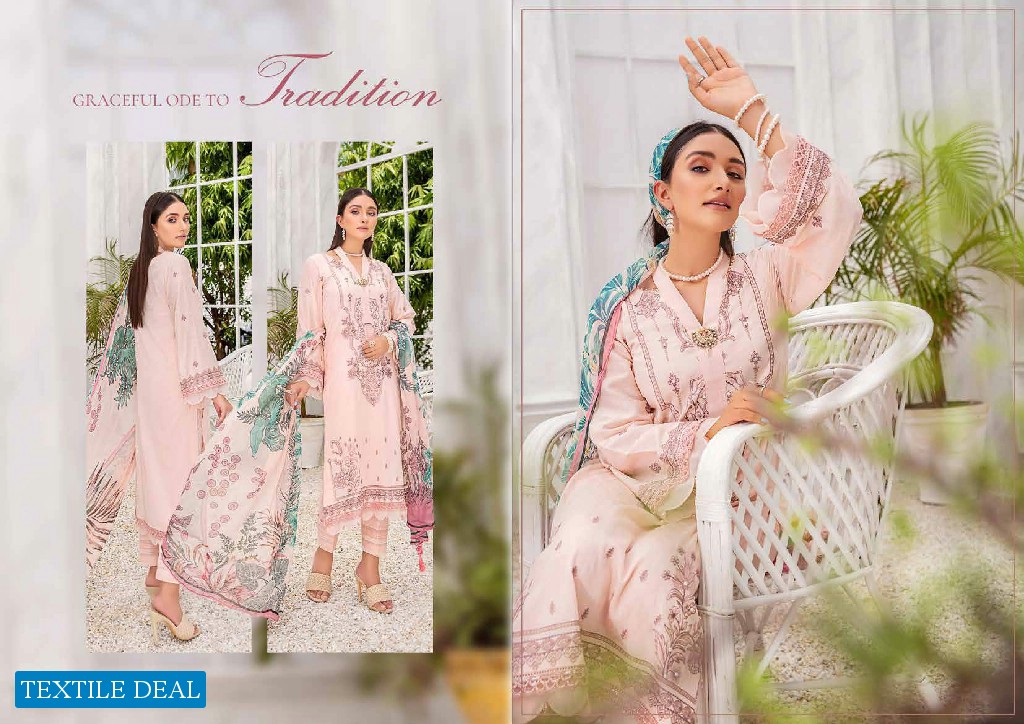
The pink suit is a garment that beautifully captures the essence of elegance and tradition. This timeless attire, adorned by women across the Indian subcontinent, has become a symbol of grace and femininity. The delicate hues of pink, combined with the intricate designs and exquisite craftsmanship, make the pink suit a favourite choice for various occasions.
The colour pink holds a significant place in the cultural fabric of many societies. In Indian culture, pink is often associated with love, compassion, and purity. The softness of the colour perfectly complements the graceful drapes and flowing silhouettes of the salwar suit. Whether it’s a light pastel shade or a vibrant fuchsia, pink adds a touch of sophistication and charm to the ensemble. The ensemble is completed with a matching or contrasting dupatta, which can be draped in various styles, adding a touch of versatility. Wearing a pink suit not only showcases one’s fashion sense but also reflects a deep-rooted connection to cultural heritage. The garment is often donned during festivals, weddings, and other celebratory occasions. It exemplifies the traditions passed down through generations, while also adapting to modern fashion trends. The pink suit can transform a woman into a vision of grace, radiating confidence and charm.
The pink suit is a timeless and captivating attire that embraces elegance and tradition. Its delicate shades of pink, combined with intricate designs, make it a favorite among women seeking a perfect blend of style and cultural heritage. Whether worn for festivals, weddings, or any special occasion, the pink suit exudes grace, femininity, and an appreciation for the rich traditions that have shaped its beauty.
The Exquisite Elegance of Zari Sarees
The art of weaving is deeply rooted in Indian culture and heritage, with each region boasting its distinct textile tradition. Among the numerous stunning traditional garments, the Zari saree stands out as an epitome of elegance and grandeur. Adorned with intricate golden embroidery and thread work, the Zari saree holds a special place in the hearts of Indian women, representing the enduring beauty of Indian craftsmanship.
The origin of Zari work can be traced back centuries ago to the Mughal era. The word “Zari” is derived from the Persian term “Zar,” meaning gold. Initially, the technique involved the use of pure gold and silver threads, showcasing the wealth and status of royalty. Over time, the process evolved, incorporating metallic threads coated with gold or silver. Zari work found prominence in regions like Varanasi, Surat, and Banaras, where it thrived under royal patronage. The meticulous craftsmanship involved in creating Zari sarees is a labour of love. Skilled artisans’ hand-weave the sarees using silk or cotton fabric, meticulously embellishing them with metallic threads. Intricate patterns, motifs, and designs are meticulously woven, reflecting the rich cultural heritage of India. The motifs often include floral patterns, paisleys, peacocks, and geometric shapes. The complex embroidery techniques, such as zardozi and aari work, further enhance the beauty of Zari saree, adding depth and texture to the fabric. Zari sarees are more than just garments; they hold cultural and symbolic significance. They are often worn on special occasions, weddings, festivals, and religious ceremonies. The golden threads signify prosperity, opulence, and celebration. These sarees have become an integral part of the Indian bridal trousseau, symbolizing the bride’s beauty, grace, and auspiciousness.
Despite the evolution of modern fashion trends, Zari saree has retained their timeless appeal. With a fusion of traditional and contemporary designs, Zari sarees have found a global following.







